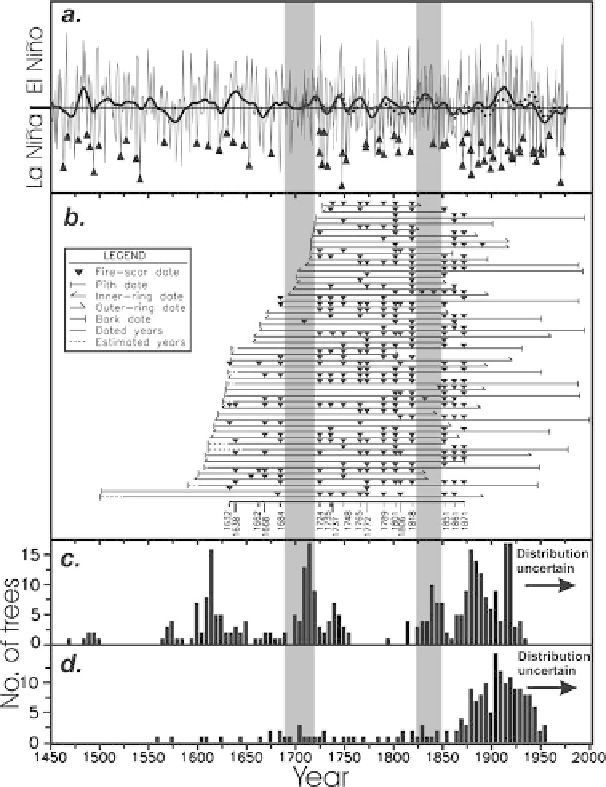Geoscience Reference
In-Depth Information
Fig. 9.8
Fire history, age structure, and climate variations in a ponderosa pine forest in south-
Oscillation Index [SOI, Stahle et al.
1998
]
). SOI is reversed to be consistent with other moisture
indices. Years of significant triennial wet/dry oscillations identified by superposed epoch analyses
(SEA) are shown by up
arrowheads
centered on the drought years. Biennial oscillations also were
tested and found to be largely absent during the fire-quiescent periods of 1684-1724 and 1818-
1851.
Thick solid
and
dashed lines
show reconstructed hydroclimate time series, smoothed with
20-year cubic splines. The
solid line
shows the annual precipitation in northeastern New Mexico
the Four Corners area (Cook et al.
2004
)
. (
b
) Fire-year chronology for Archuleta Mesa.
Horizontal
lines
mark time spans of individual trees, with fire scars designated by inverted triangles. Fire
years at bottom are those recorded on more than two trees. (
c
,
d
) Tree recruitment dates by 5-year
periods for (
c
) ponderosa pine and (
d
) other tree species. The
shaded vertical bars
connecting
graphs in (
a
)-(
d
) mark relatively quiescent ENSO variability, wet periods, reduced fire occurrence
permission of Ecology, Ecological Society of America)

